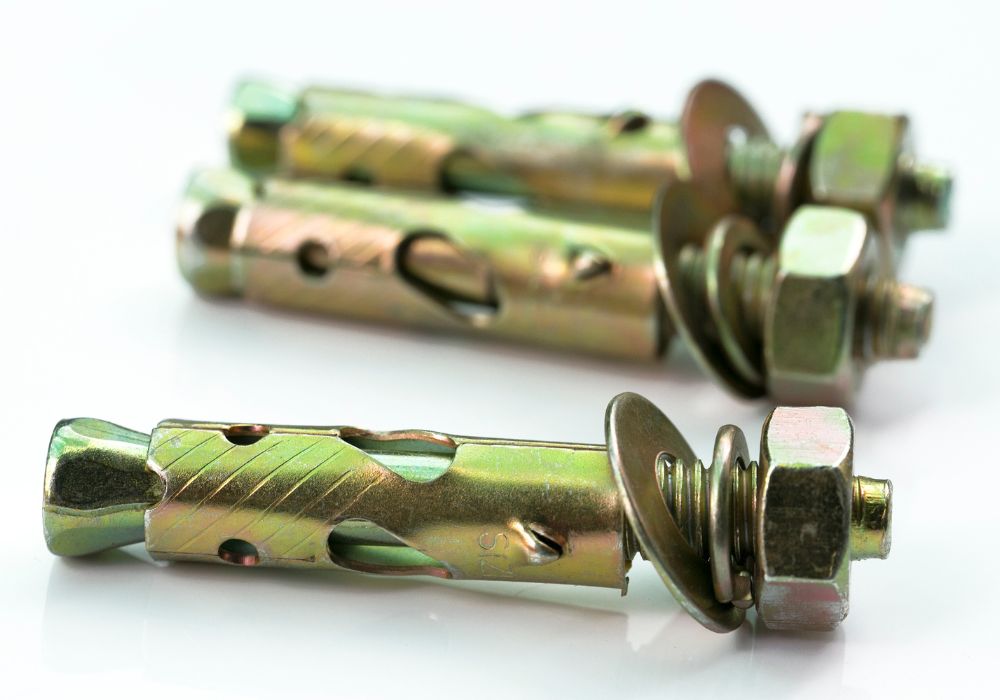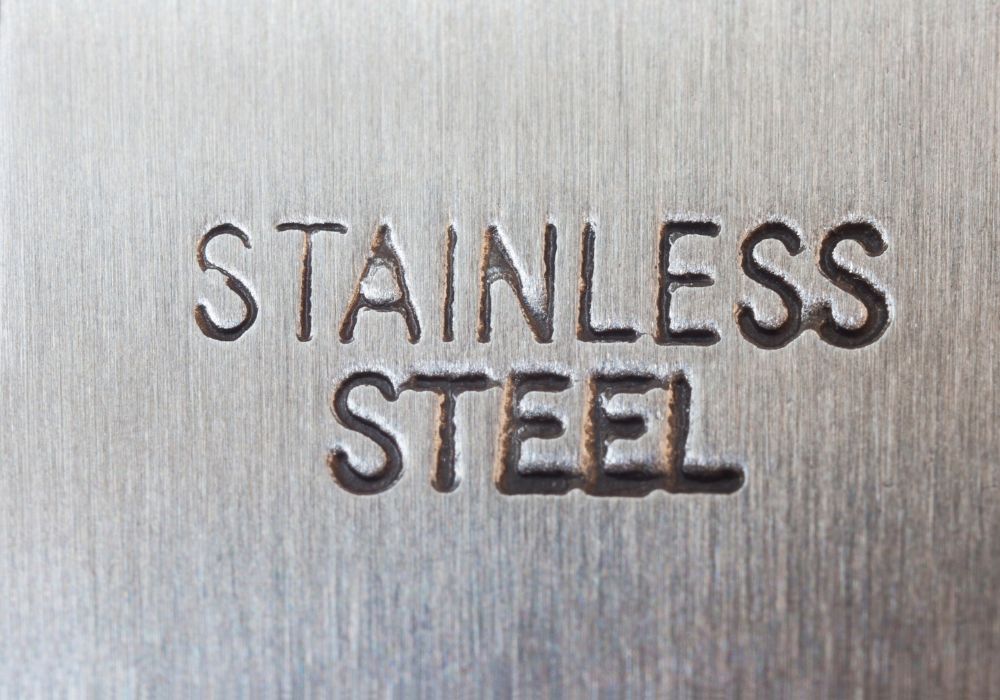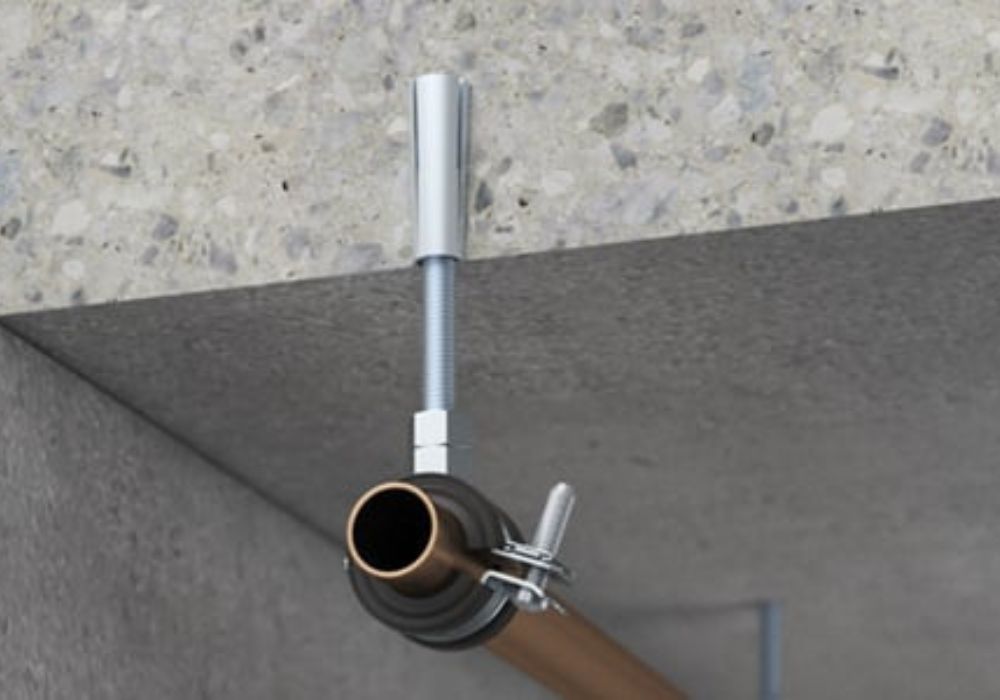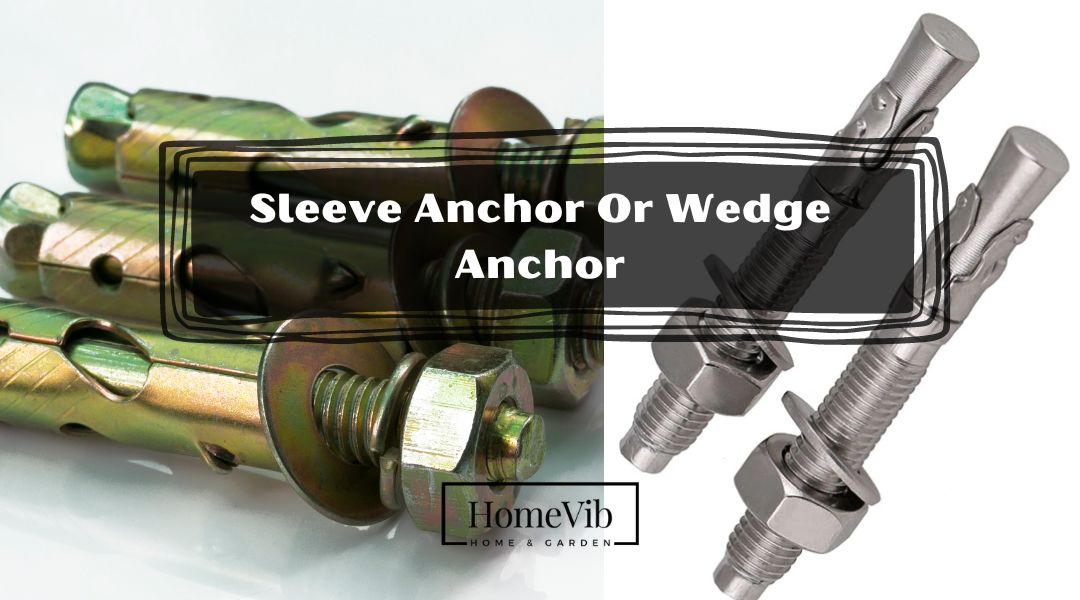Anchors are bolts that you can use in structural & non-structural applications. If you know how these kinds of screws are relatively easy and technical. However, there are two types of anchors you should know: sleeve anchors and wedge anchors.
Let’s examine the differences between these two to help you decide which one to use. When building your next project, taking a closer look at each type is essential.
Generally, the wedge anchor is stronger than the sleeve anchor. This is most especially ideal for situations with high holding power. On the other hand, sleeve anchors are easier to install. However, they don’t have as much holding force.
As a result, they’re only designed for projects with minimal to moderate capacities. They also differ in costs, making sleeve anchors more affordable. Regarding versatility, both come in various diameters, lengths, and materials.
What Is a Sleeve Anchor?

Sleeve anchors are available in steel and stainless steel. They are a valuable anchoring solution for applications to seismic loads. Additionally, homeowners utilize it with both cracked and uncracked concrete.
They come in a wide range of diameters, lengths, and head types. In addition, you can apply it with many different kinds of materials. As they arrive pre-built, they can be set up in no time.
There are four distinct designs for the heads:
- Acorn
- He
- Round
- Flat
Most homeowners use these anchors for any fastening. You can also put them in concrete, brick, or block, making them highly flexible.
What Is a Wedge Anchor?
Wedge anchor refers to a class of anchors used to secure different materials to concrete.
The two components of a wedge anchor come together in a single, preassembled piece.
The first component is a rod made of carbon steel, attaching one end. Meanwhile, an anchor’s installed end features a conical gap or necked-down diameter. It gradually widens back to the full diameter of the rod.
The application of wedge anchors is limited to solid concrete only. To install them, you must first drill a hole in the concrete.
You can only remove a wedge anchor set into concrete by breaking it.
7 Main Differences Between Sleeve Anchors And Wedge Anchors
| Factor | Wedge Anchor | Sleeve Anchor |
| Application | Concrete Only | Concrete, brick, block |
| Construction | Zinc-plated carbon steel, hot-dipped galvanized, and stainless steel | Plated Carbon Steel or stainless steel |
| Holding Power | Higher than 200 pounds | Up to 200 pounds |
| Strength | Heavy-duty | Medium-Duty |
| Installation | Same Length Hole | Longer Hole |
| Durability | High | Medium |
| Price | Check Here | Check Here |
Now that we have a general idea of each, we can dive deeper into their distinctions.
A sleeve anchor and a wedge anchor appear the same at first glance. After all, they both secure objects to a surface.
However, construction, adaptability, and holding power are the most obvious distinctions. But, at the same time, it also differs in ease of installation, cost, and application.
1. Application Differences
Regarding fastening, sleeve anchors are versatile for concrete, brick, and block. It can be anything from small to high loads. It is also a usual practice to use them when anchoring objects weighing up to 200 pounds to a concrete slab.
However, a wedge anchor is your best bet to secure something more concrete. These anchors have high-holding properties, making them a versatile option.
Remember never to use a wedge anchor in a block wall or hollow base material. Some cinder blocks are notoriously tricky to secure. It lacks depth, is easily broken, and is all over the place.
2. Construction

Sleeve anchors consist of two metals, mainly zinc or stainless steel. Plated carbon steel and 18-8 stainless steel are the most common materials.
It has a split expansion sleeve that covers a threaded stud bolt body. Additionally, it has an inbuilt expander, nut, and washer.
Meanwhile, wedge types consist of 303 stainless steel. While the nut, washer, and clip are all made of 18-8 stainless steel. These anchors consist entirely of 316 stainless steel, making them highly sturdy.
Both materials consist of steel, but sleeve anchors have lower durability.
3. Are Sleeve Or Wedge Anchors Stronger?
Concrete wedge and sleeve anchors are the best on the market today. They’re solid enough to withstand shear as well as pullout stress.
Homeowners usually use sleeve anchors due to their ease of use and durability. Although they are suitable for use in concrete, their strength is not enough with that of a wedge anchor. A sleeve anchor is ideal for situations with minimal to moderate holding power.
Meanwhile, wedge anchors are the most vital type. Yet, it will all depend on various applications. Overall, these anchors have high-holding properties making them more robust than sleeve anchors.
4. Versatility
As the most flexible type of anchor, you can use sleeve anchors with various applications.
They are the best option when deciding on railings for pathways or grab bars for bathrooms. You can also apply it as a decking material in door frames and lighting fixtures.
On the other hand, homeowners can apply wedge anchors with structural baseplates. At the same time, you can also use it for ledger angles and handrails.
Although the wedge anchor is finite for usage in concrete, it is still a flexible option. It comes in many diameters, lengths, materials, and stainless steel.
5. Holding Power

5.1. How Much Weight Can a Sleeve Anchor Hold?
The load capacity of a sleeve anchor is proportional to the size of the anchor. It will also depend on the strength of the material used to secure it.
As you can see, sleeve anchors fall under the medium-duty classification. Meaning they are suitable for securing loads of up to 200 pounds.
As a result, it has lesser holding power when compared to wedge anchors.
5.2. How Much Weight Can a Wedge Anchor Hold?
Like sleeve anchors, wedge anchors have varying degrees of holding power. It will also depend on the quality of the concrete.
As a general guideline, they need to be able to support at least 4.1 % of their working load.
For a wedge anchor with a 1/2-inch diameter in 4000 psi concrete, the safe working load is 2,344 pounds. That is if the ultimate shear force is 9377 pounds.
Furthermore, its holding capacity is dependent on the depth of its embedment. Typically, you can expect a firmer grip with a deeper fix.
6. Installation Process
6.1 Wedge Anchor Installation
Installing the sleeve anchor is as simple as pushing it through the wall.
First, it needs a hole slightly bigger than the finished product. This will allow for adequate expansion.
Then, you will need to use a cone to pull the expansion sleeve into the drill hole.
Next is to expand it against the wall of the hole.
Finally, in the case of temporary anchoring, you can remove the anchor with a surface flush.
Keep in mind
When using a sleeve anchor, the hole must be the same size as the sleeve’s diameter. For instance, a hole size of 3/8 inches is necessary for a 3/8-inch anchor. In addition, you must drill a hole at least 1/2 inch deeper into the base material to secure the anchor.
6.2 Sleeve Anchor Installation
For the wedge anchor, the installation process is more challenging.
For this reason, the hole must have the same diameter and depth as the anchor. However, the bolt can fit into the wedge anchor if the hole is adequately pre-drilled. Thus, making installation a breeze.
After you tighten the nut and washer, the clip expands and presses against the hole’s surface. This makes the load extremely secure.
Next is to drill the hole 1/2 in. deeper than the anchor. Then, it is possible to drill the hole without removing the fixture. But first, check that the bit’s diameter is small enough to pass through the fixture’s opening.
7. Price
Wedge anchor costs grow linearly with increasing diameter. This is because bigger diameters contain more steel and are more expensive. Therefore, their price naturally rises.
Prices vary depending on whether the item is zinc-plated, stainless steel 304, or type 316.
Sleeve anchors are less expensive than wedge anchors. Since wedge anchors with a bigger diameter have greater holding properties.
Buy Sleeve Anchors from Amazon.
Buy Wedge Anchors from Amazon.
Which Is Better, Wedge Anchor Or Sleeve Anchor?
If you want the strongest anchor possible for your concrete, choose wedge anchors.
Wedge anchors are stronger than sleeve anchors but require more work to install. However, this process is more challenging because it requires precise measurement.
At the same time, sleeve anchors are less expensive than wedge anchors and more versatile. For example, you can use sleeve anchors in minimal to moderate constructions.
Overall, a sleeve anchor is a good choice if you’re concerned about mild installations. However, a wedge anchor is a way to go when anchoring heavier concrete.
FAQ
Can Wedge Anchors Or Sleeve Anchors Crack Concrete?
To resist seismic design loads, wedge anchors are now legal to use in cracked concrete. Sleeve anchors also take part in following the building code.
Cracked concrete refers to concrete that develops cracks that extend across the anchor. Meanwhile, non-cracked concrete is low enough risk of breaking after anchor installation.
While many of these anchors may have worked fine in the past, they do not meet the requirements. Examples of unqualified anchors for cracked concrete are drop-in anchors and wedge-type anchors.
What Is a Redhead Sleeve Anchor Used For?
Because of its versatility, the Redhead sleeve anchor is well-suited for building and remodeling projects. This also utilizes a variety of substrates. You can also apply it on hollow and grout-filled blocks and brick.
With its quick-curing adhesive, you can use it in various situations.
What Size Drill Bit Do I Need For a 3/8 Sleeve Anchor?
When using a 3/8′′ concrete wedge, a drill bit of the same size is necessary. Thus, a 3/8-inch concrete wedge anchor requires a 3/8-inch drill bit.
You can begin drilling once you have gathered the necessary dimensions. If you have any doubts about the reliability of the measurements, you should retake them.
When installing a 3/8-inch concrete wedge anchor, you’ll need to dig down at least 1.5 inches.
When drilling, proceed with at least 1 anchor diameter embedment depth. However, no closer than two anchor dimensions to the concrete’s bottom surface. Furthermore, tighten the nut/head 3-5 turns past the hand tight.
How Deep Do You Drill For Sleeve Anchor?
When drilling into the base material, the hole must be a minimum of 1/2″ deeper than the anchor itself.
For example, a concrete slab must be at least 3-3/4″ thick if an anchor has a 1/2″ diameter. It is also important to drill the hole 1/4″ to 1/2″ deeper into the base material than the anchor will go. Once you drill the hole, remove any leftover dust or dirt.
Dimensions: Add the thickness of the material and the embedment depth. At the same time, measure the nut’s and washer’s thickness to get the correct dimensions.
Spacing: When installing anchors, you must provide enough room between them. This is to prevent pressures from interacting and weakening the anchor’s grip.











